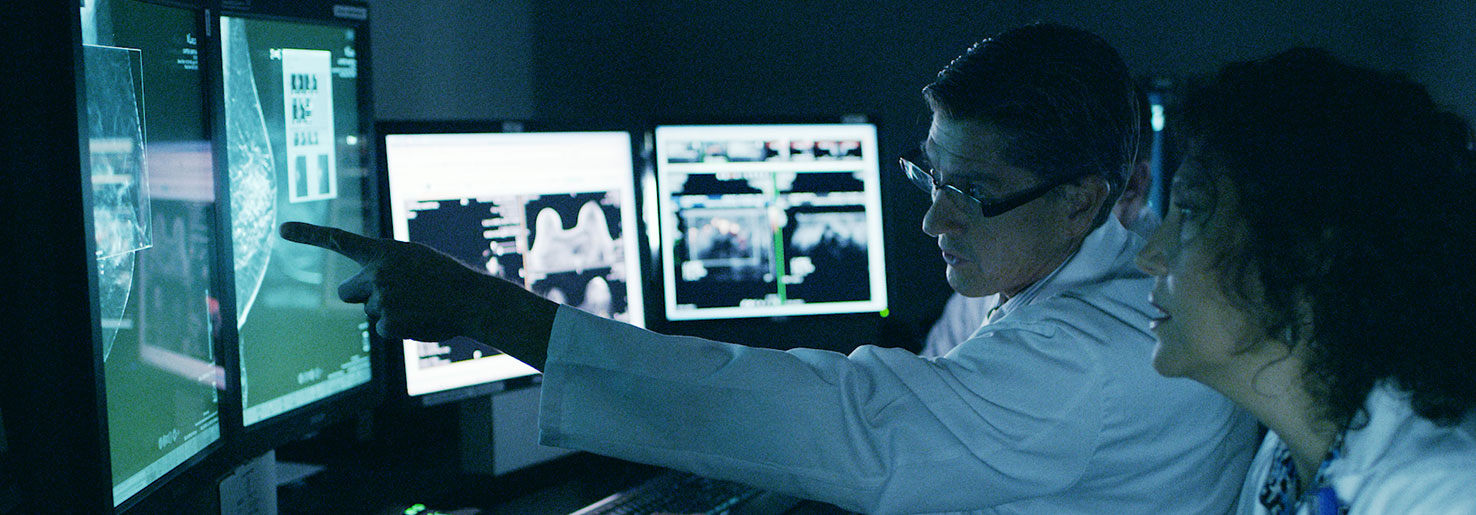
Advancing the Standard of Care for Breast Cancer Patients with Magseed® and Magtrace® Technology
At Moffitt Cancer Center, we provide our breast cancer patients with the highest quality of care. As early adopters of the pioneering technology of Magseed® and Magtrace®, we are advancing the standard of care by improving the accuracy of finding and removing breast tumors and lymph node metastases, while providing patients with a more comfortable and personalized experience.
Magseed®
Magseed is a localization device, that employs a safe, non-radioactive magnetic signal, to assist breast surgeons in the removal of breast cancers, breast masses, and sometimes lymph nodes.
Magseed does not carry the risk of dislodging like the wires, and since it uses state-of-the-art magnetic technology, it does not pose a radiation exposure risk to the patient like some other localization technologies on the market.
Magseed is designed to simplify breast cancer surgery - making surgery more accurate and seamless for the patient. This is accomplished by the Magseed being deployed into the breast tissue to mark tumors and sometimes lymph nodes, helping surgeons accurately locate the tumor and remove it in one piece. It’s a tiny seed, smaller than a grain of rice, and made of surgical-grade steel.
On the day of the lumpectomy, Moffitt’s breast surgical oncologists use a Sentimag® probe during surgery to locate the Magseed allowing pinpoint precision in detecting the cancer for surgical removal.
The benefits of Magseed include:
- Reduces re-excision rate for margin clearance (fewer additional surgeries for patients)
- Improves patient experience
- Fewer day-of-surgery procedures
- More accuracy and stability in marking cancer, finding it, and removing it
For lumpectomy surgeries, Magseed replaces the traditional need for a wire to be placed in the tumor for removal. Since Magseed can be placed weeks or even months ahead of surgery, it eliminates the need for a patient to undergo an additional procedure on the day of surgery as was the case with the older wire technology, thus creating a more optimal experience for the patient.
Magtrace®
Magtrace is a liquid lymphatic tracer used for sentinel lymph node biopsy in breast cancer. It is a non-radioactive, organically coated iron oxide nanoparticle that does not expose patients to radiation like traditional nuclear dye tracers or serious adverse reactions like blue dye tracers. Magtrace also possesses a unique property to avoid lymph node removal altogether in some breast cancer cases.
Made of organically coated iron-oxide nanoparticles, Magtrace replaces the traditional blue dye and radioactive dye that have been a go-to for lymph node identification since the 1990s.
While Magtrace is used in patients with invasive breast cancer who require removal and evaluation of their lymph nodes to assess for the spread of cancer, Magtrace’s special properties also allow it to be of instrumental help in potentially avoiding unnecessary lymph node surgery in patients with non-invasive ductal carcinoma in situ (DCIS), which does not spread to lymph nodes.
Before Magtrace, surgeons would routinely perform sentinel lymph node biopsy (SLNB) in DCIS patients during mastectomy using the older, traditional dyes. This was done because the dyes must be injected into an intact breast to map/drain to the lymph nodes for removal. This lymph node removal puts patients at risk of developing lymphedema, a permanent swelling of the arm. Since only 10-20% of patients with high-risk DCIS are upgraded to an invasive breast cancer diagnosis after pathologic assessment of the mastectomy specimen, 4 out of 5 DCIS patients underwent SLNBs they did not need.
Magtrace helps avoid SLNB in up to 80% of high-risk DCIS patients undergoing a mastectomy. After instilling Magtrace in the breast, it will drain to the sentinel lymph nodes and remain there for up to 30 days, allowing surgeons enough time for pathology results to return on the mastectomy before deciding whether additional SLNB surgery is necessary. If there’s no invasive cancer in the mastectomy specimen, there’s no need for the patient to undergo SLNB. If invasive cancer is found, then the patient can still have the opportunity for SLNB since the Magtrace will still be present in the node and can be easily identified with the Sentimag® probe for lymph node removal.
The benefits of Magtrace include:
- Provides accurate identification of sentinel lymph nodes intraoperatively for breast cancer staging
- Provides enough time for doctors to complete mastectomy, send tissue off to pathology for results, and determine if SLNB is necessary for DCIS patients
- Preventative measure for DCIS patients to avoid unnecessary SLNB and thus eliminate their risk of developing lymphedema—permanent arm swelling
Improving the Experience for Patients and Surgeons
The use of Magseed and Magtrace provides several critical advantages for patients with breast cancer with the primary benefit being the improved patient experience.
- More accurate staging: Using Magseed and Magtrace, surgeons can more accurately identify tumors and sentinel lymph nodes, helping to ensure the patient is staged correctly and receives the appropriate treatment.
- Less invasive procedure: Both Magseed and Magtrace allow for potentially less invasive procedures, giving patients shorter recovery times and lower risks of complications. There’s also no need for radioactive substances or wires, and patients enjoy fewer procedures on the day of the surgery.
- Reduced risk of unnecessary surgery: In patients with DCIS, Magtrace allows the surgeon to avoid unnecessary lymph node surgery in 80% of cases.
Breast Cancer Treatment at Moffitt
Moffitt’s team of breast surgical oncologists is leading the way to better patient experiences and outcomes with innovative, breakthrough surgical technologies like Magseed and Magtrace—real game-changers in the care of breast cancer patients.
Other tissue-saving technologies include a clinical trial testing the Perimeter B-Series OCT with ImgAssist AI, which allows for better margins during breast conservation procedures. It increases precision and reduces chances of re-operation and the potential need for radiation while reducing medical costs for patients.
Additionally, we participate in breast cancer clinical trials and provide various breast cancer surgeries, including skin-sparing mastectomy, nipple-areolar sparing mastectomy, lumpectomy, oncoplastic reduction surgery, implant and tissue-based breast reconstruction, sentinel lymph node biopsy, and axillary node dissection. Each patient’s care plan is personalized to their unique cancer, life stage, and genetics, and our multi-disciplinary teams collaborate to ensure each patient’s case is considered from every angle.
Refer a Patient
Breast oncology surgeons and medical oncologists can refer patients to Moffitt to determine their eligibility for innovative treatment options like Magseed and Magtrace. We work together with referring providers to ensure each patient is uniquely cared for and maintain transparency across teams to provide the best possible outcomes.
If you'd like to refer a patient to Moffitt Cancer Center, complete our online form or contact a physician liaison for assistance. As part of our efforts to shorten referral times as much as possible, online referrals are typically responded to within 24 - 48 hours.

